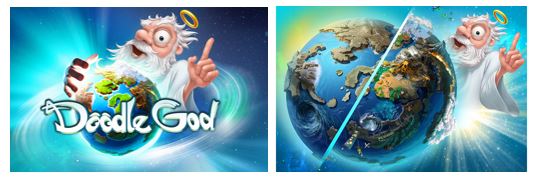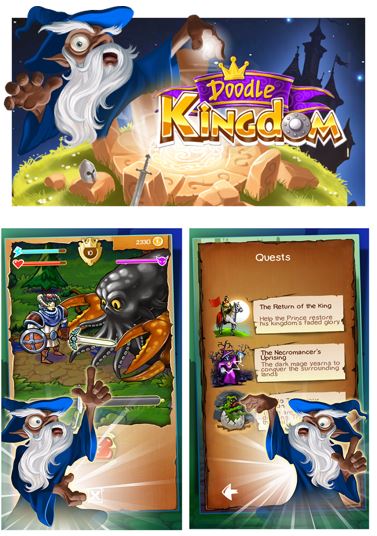What excites you about Windows 8.1 and the Microsoft ecosystem?
When Windows 8 launched in October 2012, we jumped at the opportunity to be one of the first developers to publish our games on the platform. We’ve been publishing more games to Windows ever since, and with the release of 8.1, we connected Windows and Windows Phone gameplay. Our audience and our success have only grown.
At its core, Windows is multi-platform, and using Windows 8.1 we can build and deliver our games to Windows, Windows Phone, and Xbox One faster. That’s very exciting. And it provides an advantage over other platforms: for example, we plan to release our new game Doodle God Planet (a sub universe within our most successful title Doodle God) simultaneously on three platforms: Windows 8, Windows Phone, Xbox One, and that’s going to increase our potential addressable market.
In addition, 8.1 comes with several pre-programmed features which decrease our time-to-market, reduce our QA time, and help us make more robust apps.
Joybits’ gaming engine is built on Microsoft Azure, which allows us to develop once and deploy on multiple platforms (including those outside the Microsoft universe, like Amazon, Android, and iOS). This has led us to 160 million downloads of our games, as our developers have been able to focus on gameplay and content instead of the mechanics of getting the code to work.
Why did you decide to go with the Microsoft Azure cloud solution?
We picked Azure because we have a long history of success developing on Windows. When Microsoft contacted us, we were happy to try Azure, and we’re glad we did. The most important thing is that Azure works on most of our target platforms, so we can focus on new content, games, and characters instead of backend engineering to accommodate scale on multiple platforms and devices.
We also use Azure to deliver a consistent experience on every device on every platform. A gamer can move seamlessly from phone to tablet to computer, which helps us to keep our users engaged for longer.
Azure’s value proposition is simple: more platforms lead to bigger audience leads to more downloads lead to more revenue. So Azure allows us to increase our market share. If we made widgets instead of mobile games, you could think of this as the difference between being in 100 retail locations (without Azure) or 1,000 (with Azure). More stores, more money.
How much money have you made? Tell us about your monetization strategies.
The Doodle God series is approaching $10 million in revenue across all platforms. More than $1 million of that has come from Windows alone.
We monetize our games using a combination of pay-per-use, free-to-play, limited advertising and micro-transactions. We’ve recently added an app, Microtran, so users can buy games for Windows 8 and then purchase additional assets to the game through micro-transactions. The free-to-play apps are supported by micro-transactions as well. Different consumers have different consumption patterns and purchasing preferences. We use a combination of monetization strategies to cater to all of their preferences.
We’ve also tried different approaches to marketing. We cross-sell each Doodle game in the others, so if you’re playing Doodle God, you will see advertisements for Doodle Devil or Doodle Kingdom. Cross-selling is important to us. We use social media like Facebook and Twitter and have 250,000 fans on each of those platforms. Our PR efforts focus on some of the larger consumer gaming Web sites like Pocket Gamer, and we work with the App Stores to get the store merchandising teams excited about our apps, too. Often, the App Stores feature our games which is a fantastic advantage. And then we also conduct user acquisition campaigns.
What is your advice to developers?
We’ve been successful on Windows, and that success continues to grow, thanks to Microsoft Azure. With Azure, we create high-quality connective games that users can play on any device. I encourage all developers to take full advantage of these resources and scale the reach of their games.


